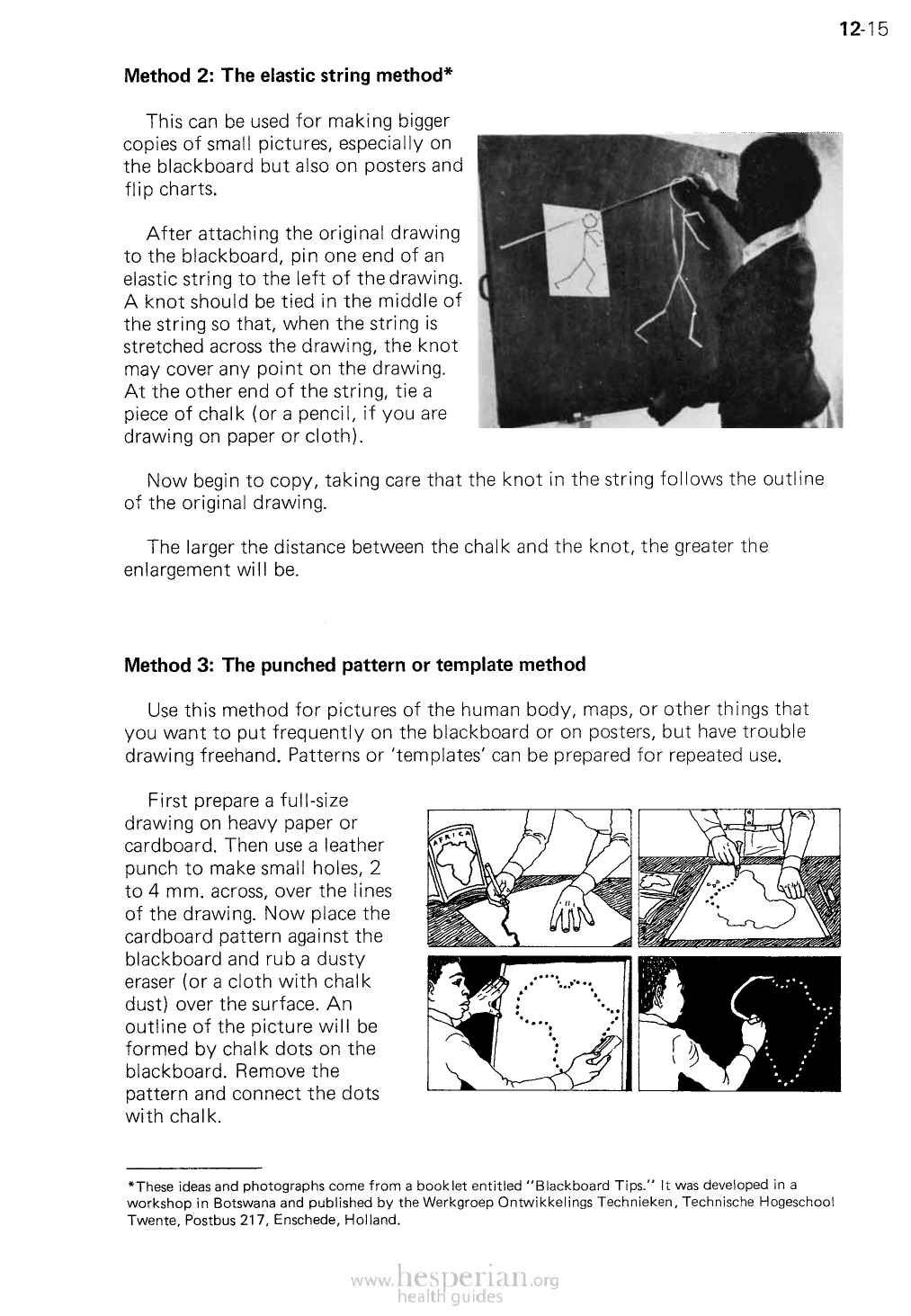
12-15
Method 2: The elastic string method*
This can be used for making bigger
copies of small pictures, especially on
the blackboard but also on posters and
flip charts.
After attaching the original drawing
to the blackboard, pin one end of an
elastic string to the left of the drawing.
A knot should be tied in the middle of
the string so that, when the string is
stretched across the drawing, the knot
may cover any point on the drawing. At
the other end of the string, tie a piece
of chalk (or a pencil, if you are drawing
on paper or cloth).
Now begin to copy, taking care that the knot in the string follows the outline of the
original drawing.
The larger the distance between the chalk and the knot, the greater the enlargement
will be.
Method 3: The punched pattern or template method
Use this method for pictures of the human body, maps, or other things that you want
to put frequently on the blackboard or on posters, but have trouble drawing freehand.
Patterns or ‘templates’ can be prepared for repeated use.
First prepare a full-size
drawing on heavy paper or
cardboard. Then use a leather
punch to make small holes, 2
to 4 mm. across, over the lines
of the drawing. Now place the
cardboard pattern against the
blackboard and rub a dusty
eraser (or a cloth with chalk
dust) over the surface. An
outline of the picture will be
formed by chalk dots on the
blackboard. Remove the pattern
and connect the dots with
chalk.
*These ideas and photographs come from a booklet entitled “Blackboard Tips.” It was developed
in a workshop in Botswana and published by the Werkgroep Ontwikkelings Technteken, Technische
Hogeschool Twente, Postbus 217, Enschede, Holland.